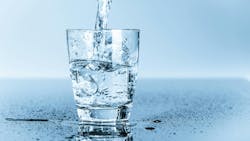Zero liquid discharge (ZLD) is a treatment process that converts wastewater to recycled water and solids, leaving zero discharge at the end of the treatment cycle.
The end product of a zero liquid discharge system is a solid residue of precipitate salts that needs to be transferred to a solid waste disposal facility, such as a landfill. The process starts after secondary treatment.
ZLD can also be used for brine management in inland desalination plants, and is commonly used in power plants in China where regulations have necessitated the process.
What is a Zero Liquid Discharge System & Minimum Liquid Discharge?
ZLD systems include the use of evaporators and brine crystallizers to completely separate dissolved salts from the water.
The treatment system combines clarifiers, membrane technologies such as ultrafiltration and reverse osmosis, with final stages of brine concentrators, evaporators and crystallizers.
There are several zero liquid discharge systems including:
-
Combination Thermal Process with zero liquid discharge;
-
Mechanical and thermal evaporation zero liquid discharge;
-
Enhanced Membrane and thermal zero liquid discharge;
-
Evaporation ponds;
-
Wind-Aided Intensified Evaporation;
-
Dewvaporation; and
-
And Salt Solidification and Sequestration.
Minimum liquid discharge (MLD) is the process by which a system recycles treated water or wastewater within its own system to limit how much is discharged into the environment. MLD uses crystalizers and evaporators that generate heat to release the treated water into the atmosphere.
What is the history of Zero Liquid Discharge?
ZLD has been applied to the power industry for approximately 50 years, according to EPA. This is a process that occurs around the world, with the U.S., China, and India recognized as representing a large zero liquid discharge market.
The process dates back to the 1970s, when the increased salinity of the Colorado River led to a regulatory mandate of zero liquid discharge for nearby power plants.
Zero liquid discharge continues to be adopted at power plants in the power industry. Other common opportunities for ZLD to occur are distributed across areas including electronics, fertilizer, mining, and chemical industries.
Due to stricter regulations for wastewater disposal, zero liquid discharge systems have become more widely used.
What are the benefits of using Zero Liquid Discharge?
A zero liquid discharge system can assist with rising water costs and droughts. ZLD contributes to water conservation, reducing intake of fresh water, and avoids the environmental impacts of wastewater discharge.
Although it is not possible to completely recover all of the influent water, the process maximizes the treatment and recycling of wastewater.
What are the pitfalls of using Zero Liquid Discharge?
Zero liquid discharge involves high capital expenditures and running costs, as well as high energy consumption, which leads to significant emission of greenhouse gases.
ZLD leaves a solid waste by-product, dry sludge, containing high levels of hazardous chemicals and heavy metals.
